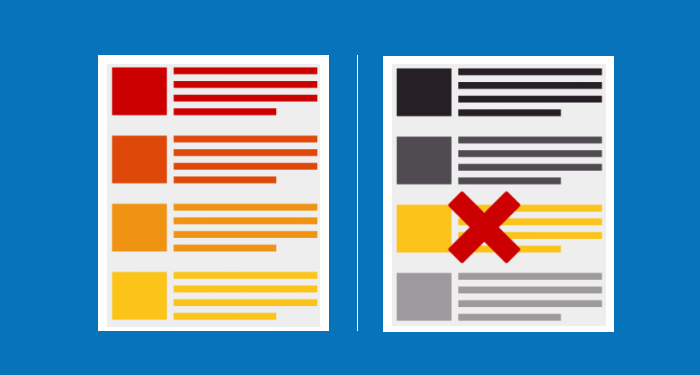Magento has evolved as one of the best content management platforms for the eCommerce solution. The features, functions, templates, and extensions make this platform an ideal choice for online retailers/merchants and business owners who wish to set up a professional-looking online store from scratch. Even world-recognized brands have been enjoying the extensive features and functionality of the Magento platform.
So, once you have launched a Magento online store, make sure you optimize it for search engines and your potential web customers. Although Magento is one of the most search engine-friendly eCommerce solutions on the web, you need to put more SEO efforts if you want to improve the ranking of your e-store on SERPs (Search Engine Ranking Pages).
There are many aspects related to good SEO practice that you will need to consider while improving the online visibility of your eCommerce site. The improved SEO ranking will increase the conversions as well as sales of your web business to a great extent. So, here we bring you some tried and tested SEO techniques that will make your Magento e-store more SEO-friendly and well-optimized.
1. Magento web store configuration
First, optimize your Magento store by adjusting its settings in the web configuration. To do this, navigate to System > Configuration > Web on your site's admin panel.
Now, you can tweak the setting “Add Store Code to URLs” from “yes” to “no” to exclude irrelevant keywords from the URL.
You can also change the setting “Auto-Redirect to Base URL” to “Yes” to automatically redirect your store to your base URL. For instance, if your base URL is http://www.yourdomainname.com, it will redirect to the www version of your site afterward.

You can Also Rewrite Server URLs to make your site more optimized for search engines. For that, go to System > Configuration > Web > Search Engine Optimization Menu. Here, you need to click on “Web Server URL Rewrites” and change it to “yes”. This setting will remove index.php from your URLs to make them more SEO-friendly.
2. Write SEO-friendly page titles for improved CTR
Page titles play a crucial role when it comes to getting a higher ranking on search engine platforms. In fact, most of the popular eCommerce stores use descriptive, SEO-friendly, and user-centric page titles to grow their customers' reach across the web. Well, there are two major benefits of creating descriptive page titles:
(a) Improve the CTR (Clickthrough) of your site.
(b) Generate a higher ranking on Google and other search engines.
So, make sure you add main keywords relevant to your product(s) in your page titles to make it visible on Google's search results. Try to create a product page by mentioning a product name, along with a brief description, to attract more web traffic towards your eCommerce store.
3. Optimize your Metadata
Being an SEO professional, make sure you optimize the Metadata (meta title, meta description, meta keywords, etc.) for better search engine ranking. You can add main keywords (at least five) to the meta title and description of your page. This will help both search engine crawlers and web audiences find your site.
Google and other search engines use metadata to determine the relevance of a user's search term that a web user writes to find your product page or web store. So, you need to write relevant, SEO-friendly, and persuasive Metadata for each of your product pages. This not only improves the CTR of your web store but also helps you generate more leads.
Consider the following tips while writing descriptive and SEO-friendly Metadata for each of your product pages:
- Since your meta description appears in the search engine results, encouraging people to click through to your site, ensure you create a unique and keyword-friendly description that is relevant to your product page.
- Meta title should be 40-60 characters long.
- Meta description should range between 150 and 180 characters.
- Separate your meta keywords by commas if you want to generate better results.
4. Enable Robots.txt file
Magento e-store owners often overlook this step when optimizing their store for a higher search engine ranking. A robots.txt file for a website essentially indicates the web pages, posts, database files, multimedia files, etc. of your site that you don't want to be indexed by search engine crawlers. This means you need to modify your Robots.txt file if you want to add commands that allow search engines to index the URLs that you want to index in search engine results, and also indicate ones that you don't want to index.
This technique will make your job a lot easier.
5. Generate an XML Sitemap
Create an XML sitemap for your Magento store to make it easy for search engines to crawl, index, and rank your site on search engine result pages. For that, you need to submit your sitemap to Google Webmaster Tools, Bing Webmaster Tools, etc. All you need to do is to follow the following procedure to enable the XML Sitemap of your Magento web store:
- Go to the System
- Configuration
- Google Sitemap (under the catalog heading) > Add New
- Type “sitemap.XML” under Filename
- Under the Path field, enter the directory on the server where you will save your sitemap file.
- Select the store view for which you want to set up a sitemap
- Save and generate sitemaps for your Magento eCommerce site.
Note: Update the settings of your existing sitemap if you added a new product or category to your web store.
6. Say no to duplicate content
The way Magento manages query strings on site URLs could create a serious problem if you use duplicate content on your web store. Magento usually creates duplicate content for those products that appear in more than one category. This can directly or indirectly affect the ranking of your site on SERPs, which is not at all suitable for your web business.

To overcome this issue, you need to avoid using duplicate content on your product pages. For that, you need to tweak your canonical link. Consider the following process if you want to edit your canonical link:
- Go to the System
- Configuration
- Catalog
- Search Engine Optimization
- Tick yes on “Canonical Link Meta Tags for Products and Categories.”
With the help of canonical links, you can assign pages that need to be indexed by search bots and minimize duplicate content on your product pages.
7. Follow a persistent tag structure
Suppose you are a Magento web store owner and are looking for incredible yet straightforward ways to generate higher SEO rankings. In that case, you need to focus on creating a persistent tag structure for each of your product pages.
You can use H1 Tags for the Catalogue Name and H3 Tags for the product names on your Product Catalogue Pages. This will help you get higher visibility on search engine platforms. These two tags will help search bots know about the importance of your content on each product page.
8. Embed ALT tags in your images
You can't think of an eCommerce store without a product image. High-quality images play a vital role in determining the success of a website. Since every product on a website has 3 to 4 images, make sure you add ALT tags to make it more friendly to search engines.
If you want to use the ALT tags effectively, you need to set up an advanced way of creating the tags. It is better to make a script that will automatically produce ALT tags to display the file name (minus hyphens) – this will allow search bots to find and index your product images with ease.
9. Speed Optimization
Magento speed is crucial when it comes to determining SEO ranking. Web visitors usually abandon a site that takes more than 3 seconds to load. In fact, the tendency to leave a web page increases more on an eCommerce site if it takes longer to load – this negatively affects the conversions, and you may also lose your potential web customers.

In fact, Google prefers a fast-loading site over sluggish ones. This means you need to optimize the speed of your Magento store if you want to rank at the top of SERPs. The following tips will help you achieve this:
- Use the latest version of Magento
- MySQL Configuration
- Enabling Flat Catalog
- Image Optimization
- Compress JS and CSS files
- Optimize Magento database and logs
- Choose a secure and fast web hosting
- use caching
- Content Delivery Network
- Update index, etc.
10. Integrate Google Analytics
Don't forget to add the Google Analytics tool to your eCommerce site. This will help you track the performance of your web store and provide you with more insights into your web customers' behavior when they access your site in real-time.
You can also review the performance of your search engine optimization techniques and further customize your site to make it more compatible with different search engines and web audiences.
To do that, you need to embed your Google Analytics tracking code for eCommerce tracking. For that, you need to go to System > Configuration > Sales > Google API.
Conclusion :
These are the 10 most amazing and practical SEO tips that will improve the ranking of your Magento web store on Google, Bing, Yahoo and other search engine platforms. You can follow these tips and boost the online visibility of your eCommerce site.
Author Bio:
Linda Wester is a professional web developer, a prolific blogger and something of a geek. She has been associated with HireMagentoGeeks Ltd. as a front-end developer for more than 4 years. In her spare time, she loves exploring new things and sharing her experiences with other readers on the web.










